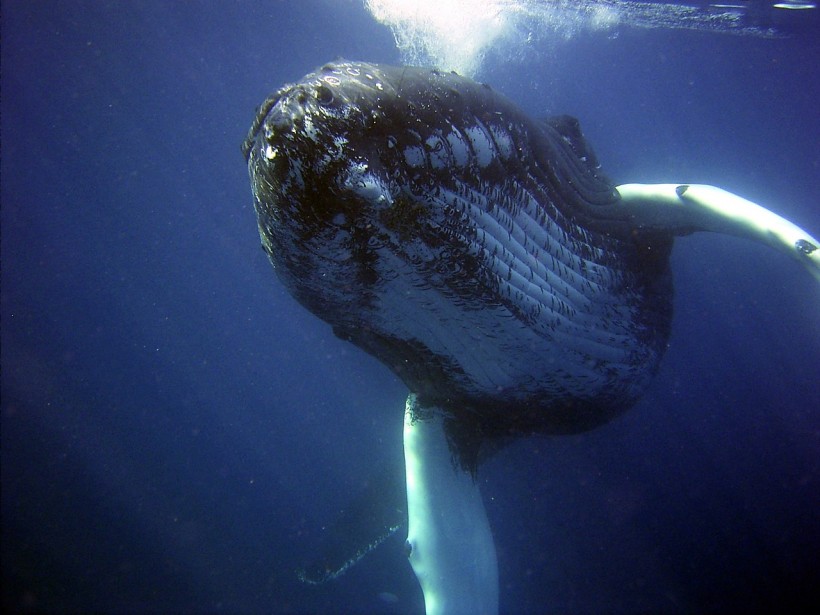While reminiscent of Avatar 2, scientists claim a 20-minute chat with a 38-year-old humpback whale, Twain, marks the first communication in whales' language. This breakthrough may impact future alien interactions.

Whale Chat: 20-Minute Humpback Conversation Offers Insights into Future Interspecies Communication, Says Study
First Conversations With a Humpback Whale
In a distinct encounter, researchers from the SETI Institute, the University of California Davis, and the Alaska Whale Foundation engaged in a conversation with Twain, a humpback whale.
In their experiment, the team used an underwater speaker and played a recorded humpback "contact" call, wherein Twain responded by aligning with the interval variations throughout the 20-minute exchange.
This scientific pursuit, reminiscent of a Star Trek scene, carries implications for SETI, delving into interspecies communication. By studying how whales communicate, the researchers seek to develop 'intelligence filters' to identify potential alien signals.
Throughout the study, the team transmitted a 'whup/throp' greeting call through underwater speakers. Twain reacted by approaching the boat and emitting her own greeting call. Significantly, researchers observed Twain adjusting the frequency of her calls in response to the broadcast, revealing interactive communication.
Lead author Dr. Brenda McCowan of UC Davis emphasized that this interaction likely marks the first communicative exchange between humans and humpback whales in their language.
The study indicates that Twain's reaction originated from excitement and, possibly, agitation, providing valuable insights into interspecies communication. Additionally, the observed 'behavioral synchrony' implies bonding and group cohesion, suggesting active engagement in communicative exchange.
READ ALSO: Can Humans Finally Talk to Whales? Scientists Use AI to Try Decoding Whale Songs
A Way To Communicate to Extraterrestrial Life
The researchers are not merely seeking to communicate with whales; rather, their ultimate goal is to extract insights for potential communication with extraterrestrial life forms. In a parallel approach to scientists using Antarctica as a terrestrial analog for alien environments, SETI researchers leverage Earth to find comparable scenarios for understanding extraterrestrial intelligence.
In the absence of direct contact with aliens, the researchers turn to whales as a means to formulate strategies for non-human communication. Humpback whales, with their exceptional intelligence and communication abilities, serve as an excellent proxy for studying potential extraterrestrial communication methods.
Similar to how space missions are simulated on Earth, the Whale-SETI team analyzes humpback whale communication systems to enhance the detection and interpretation of signals from outer space. Their findings contribute to the development of filters applicable to any received extraterrestrial signals, expanding the scope of the search for intelligent life.
Laurance Doyle, a coauthor from the SETI Institute, notes that the assumption that extraterrestrials would be interested in making contact and target human receivers aligns with the behavior of humpback whales.
Twain's sophisticated responses, including approaching the team's boat and mirroring interval variations, reflect a human-like conversational style, highlighting the whales' remarkable communication abilities.
Fred Sharpe, a co-author from the Alaska Whale Foundation, underscores humpback whales' intelligence, complex social systems, tool-making capabilities, and extensive communication methods.
Collaborating with humpback whales presents a unique opportunity to explore intelligent communication in non-human species, applying information theory principles to develop filters crucial for processing extraterrestrial signals in the quest for intelligent life beyond Earth.
RELATED ARTICLE: Communication With Extraterrestrial Life Could Be Challenging When Humans Encounter Them Due to Language Barriers, Experts Claim
Check out more news and information on Extraterrestrial Life in Science Times.














